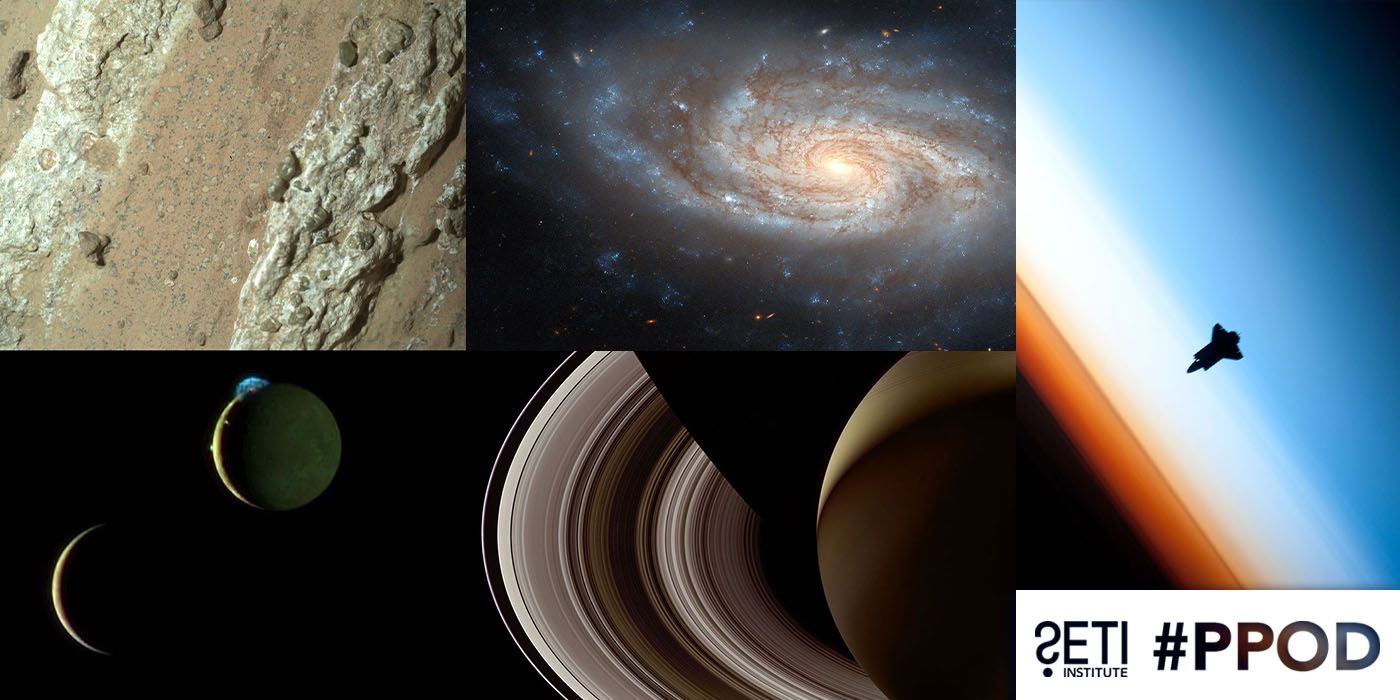
Planetary Picture of the Day
Week of July 29, 2024
Enjoy classic imagery of Saturn, Jupiter's moons, and a Space Shuttle above Earth. Plus, interesting rocks recently found on Mars and a gorgeous galaxy from Hubble.
Monday, 29 July 2024
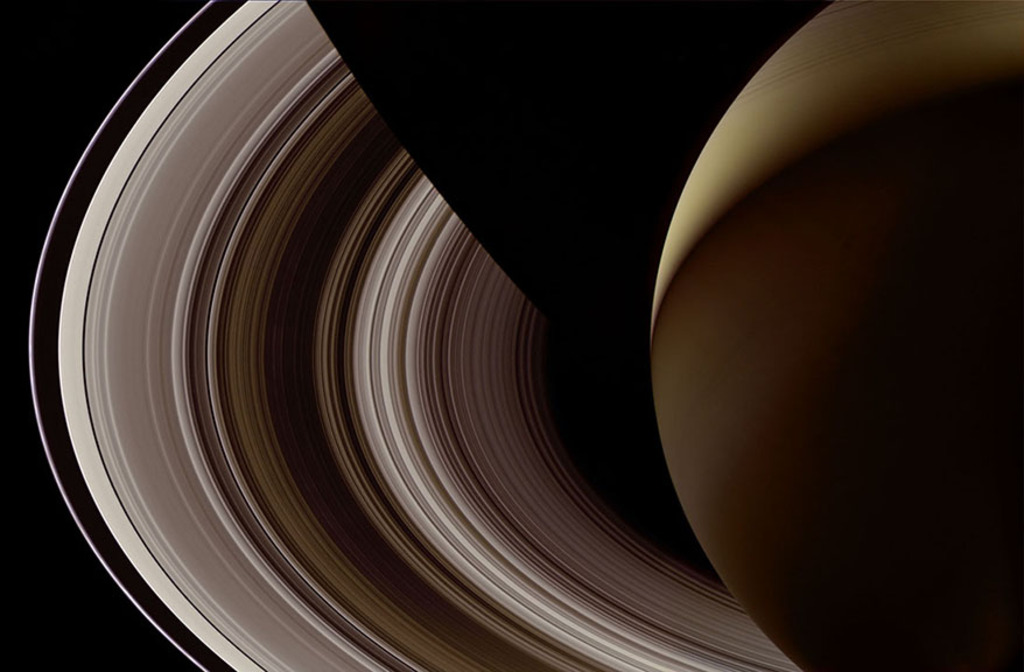
The Lord of the Rings
NASA's Cassini spacecraft captured this fantastic night-side view of Saturn and its rings on October 28, 2006. Mosaic composite processed by Michael Benson (https://buff.ly/3A49ZPH).
Tuesday, 30 July 2024
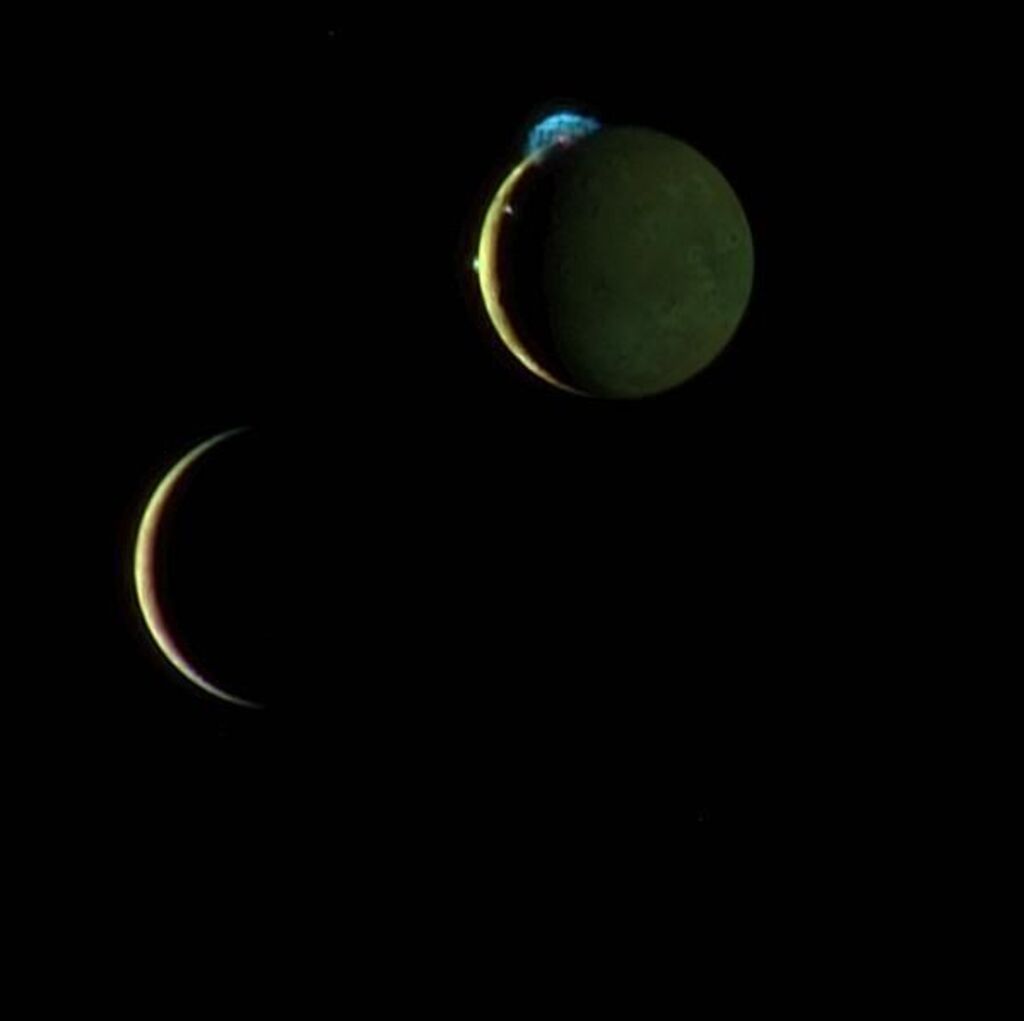
Galilean Pair
This is a composite image of Jupiter's volcanic moon Io and Europa taken during a March 2, 2007 flyby by NASA's New Horizons spacecraft. Here Io (top) steals the show with its beautiful display of volcanic activity. Three volcanic plumes are visible. Most conspicuous is the enormous 300-kilometer (190-mile) high plume from the Tvashtar volcano at the 11 o'clock position on Io's disk.
Wednesday, 31 June 2024
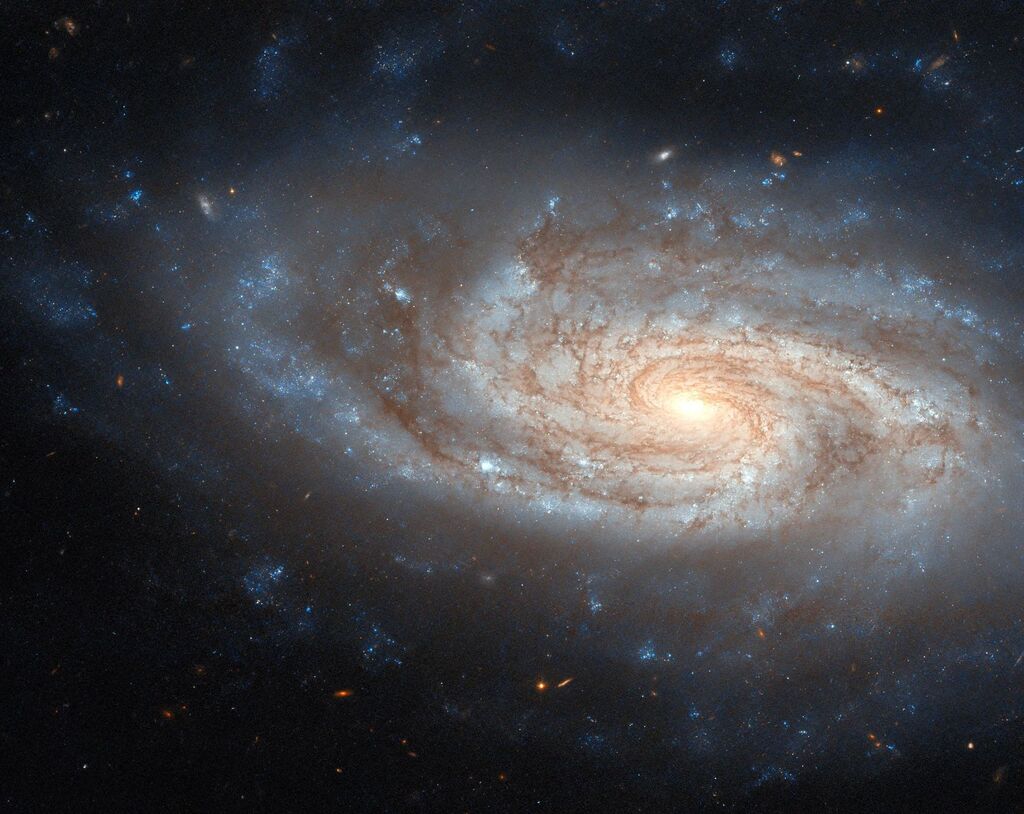
Hubble Images a Classic Spiral
This NASA/ESA Hubble Space Telescope image is a wonderfully detailed snapshot of the spiral galaxy NGC 3430 that lies 100 million light-years from Earth in the constellation Leo Minor.
Thursday, 1 August 2024

Leopard Spots
NASA's Perseverance Mars rover captured this image of a rock nicknamed "Cheyava Falls" on July 18, 2024. Running the length of the rock are large white calcium sulfate veins. Between those veins are bands of material whose reddish color suggests the presence of hematite, one of the minerals that gives Mars its distinctive rusty hue. Scientists are particularly interested in the millimeter-size, irregularly shaped light patches on the central reddish band (from lower left to upper right of the image) that are surrounded by a thin ring of dark material, akin to leopard spots. Spotting of this type on sedimentary terrestrial rocks can occur when chemical reactions involving hematite turn the rock from red to white. Those reactions can also release iron and phosphate, possibly causing the black halos to form, and they can be an energy source for microbes, hence the association between such features and microbes in a terrestrial setting.
Friday, 2 August 2024
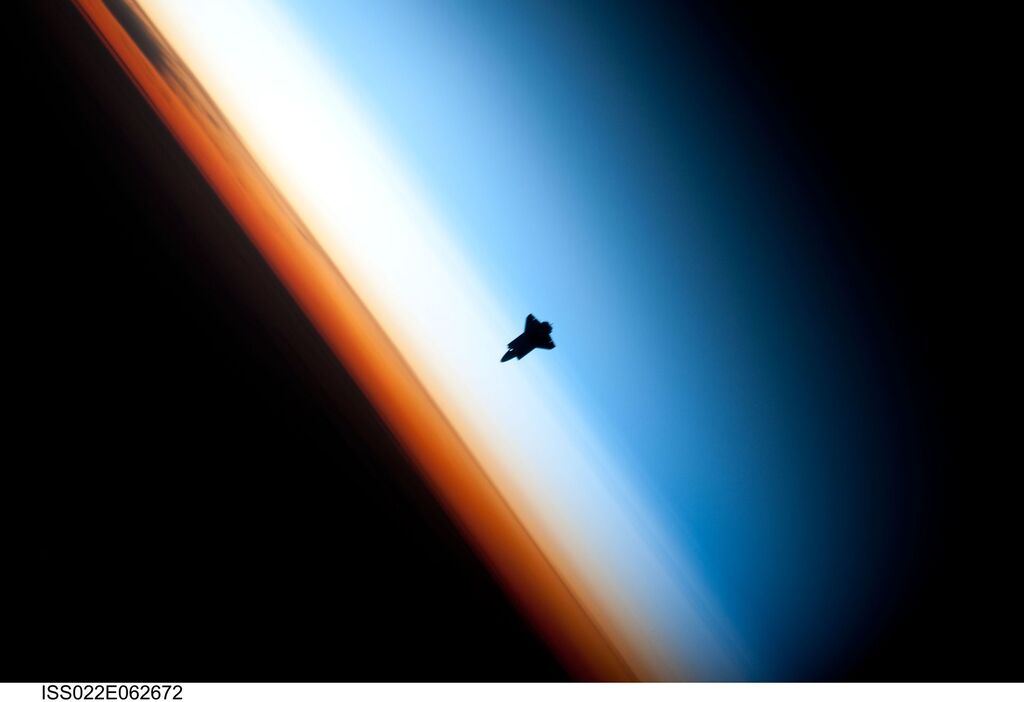
Shuttle Silhouette
Space Shuttle Endeavour approaches the ISS on 10 February 2010 on its mission to install its primary payloads, the Tranquility Node-3 module and Cupola, the European-built observatory module.





